Guadeloupe, Along The Route du Rhum…
Destination - CaribbeanOnce again this year, the world will be avidly following the famous Route du Rhum. This transat sets off from St. Malo in winter, and arrives in Guadeloupe in the summer. And all in less than a week! What about using it as an excuse to discover this particularly attractive Caribbean archipelago! Let's head for Guadeloupe!
LOG BOOK
The Route du Rhum is more than just a race. For 40 years, it has attracted not just confirmed ocean sailors, but also anyone who has one day dreamt of setting out to sea... The race owes its mythical status to the incredible denouement of the very first edition. Only 98 seconds separated the winner (Mike Birch's trimaran) from the second placed Michel Malinovski. A gap of less than two minutes after crossing the Atlantic! It's the shortest distance in transat history…
Yet if "The Rhum" still has us dreaming, it's also about arriving in the wonderful waters of the Guadeloupe archipelago. It's sunny, it's hot, the sea is blue and there's a warm welcome from the locals. It's a tempting cocktail!
From Petite-Terre to Les Saintes, via Marie-Galante and its famous rum, the islands of Guadeloupe offer a whole host of marvels to all those who are looking for gorgeous anchorages and new encounters. And if you're lucky enough to be sailing a multihull, you'll be able to take advantage of one of those peaceful spots that's almost reserved for you, as they're out of bounds to deep draught vessels.
If you spend a week sailing in Guadeloupe, you can sail a few hours a day and discover different islands, each with a different character. In between the visits to distilleries, diving in some of the best places in the world, the unique fauna and in particular some impressive iguanas, as well as all these landscapes that only exist in the West Indies, you'll still find plenty to keep you interested. Access from Europe or North America is easy and there is a modern marina from where you can set off in the best possible conditions. So what's holding you back? Let's go!
A TYPICAL ITINERARY
Cruising in Guadeloupe always starts at the marina in Bas Fort, where all the charter companies are based. We recommend that you spend your first night at Le Gosier islet. At less than three miles from the marina, this mooring will allow you to acclimatize easily to life on board and to the heat, whilst making the most of the Caribbean Sea. In the evening, the islet is deserted and it's the ideal moment to enjoy it.
Next, if the wind is right, (careful, this could imply some fun, close-hauled sailing), head for Petite-Terre. Half way between Guadeloupe and Marie-Galante, Terre-de-Haut is a deserted island, watched over by just two guardians, a few thousand iguanas (there are 10,000 in the reserve), countless birds, dolphins, sea tortoises and of course hermit crabs. The mooring field is reserved for shallow draught vessels (less than 2 meters) and it is strictly forbidden to drop anchor. You therefore need to use one of the laid moorings that are available (the largest are reserved for day-charters), but if they're all taken you will not be able to stay… So it's best to arrive early in the morning or alternatively late afternoon. You will then be able to make the most of this paradise, and even enjoy the unique experience of spending the night there. Be aware that it is forbidden to visit the other Island, Terre-de-Bas. Terre-de-Haut is worth the trip, but getting there can be quite tricky especially when there is a north easterly swell…
After this stopover, it's time to head for Marie-Galante. This island produces probably the best rum in the West Indies. But don't tell anyone. It's a secret! What is for sure is that over a hundred windmills cover the island, and it's worth hiring a car to visit. The Grand-Bourg anchorage is lovely and the access is well indicated, although you should always keep an eye open for the (too) many fishing nets and keep away from the nippy speedboats that come from neighboring Guadeloupe.
On leaving Marie-Galante you will undoubtedly have a twinge of regret: this island has its own personality and many of those who visit swear that they will come back one day…
Next it's direction Les Saintes, about 20 miles away, which is usually a downwind sail. It's a great trip which will bring you to one of the most famous and most beautiful bays in the world. In the anchorage, you are in the shadow of the famous house of the island's doctor, in the shape of an old cargo ship. Wait until 4 or 5pm when all the other boats leave for Guadeloupe. The ambience changes completely and you'll have the island to yourselves. It's marvelous. There is a buoyed mooring field in front of the Maison du Médecin (Doctor’s House)... practical and reassuring. But to make the most of the area, why not go and anchor at the Anse du Pain de Sucre, or even better at the Anse Fielding on Terre-de-Bas, which is much less touristy.
After your stopover in the Saintes, you can sail up the coastline of Guadeloupe towards Deshaies, about 30 miles away, where you can dive in the famous, magnificent Cousteau Reserve near Pigeon Island. It's one of the best diving sites in the world!
The Deshaies mooring is very pleasant, opposite the little village clustered around its church bell tower. It's a truly West Indian ambience and there are several shops and restaurants… It's also the ideal place to base yourselves for a visit to the Basse-Terre national Park.
To get back to your starting point, you now have two solutions: you can either continue the circumnavigation of Guadeloupe, and try and visit the Grand Cul-de-Sac Marin, an amazing mangrove, and take the Rivière Salée to link up with Pointe-à-Pitre. Please check with your charter company that you are allowed to take this route which can be tricky (maximum draught 1.50m) and also the timings for passing through the bridges. They are supposed to be open from 4.30am to 5.30am.
Otherwise, the easiest way home is to follow your route back and have another stopover in the Saintes.
Did this little visit to the islands of Guadeloupe whet your appetite? If so, it's worth knowing that you can easily add on a stopover on Dominica, at Prince Rupert's Bay, between Marie Galante and the Saintes, or head further north to Antigua…
USEFUL INFORMATION
Customs Formalities: Guadeloupe is part of France. Usually a current, valid passport will be enough. There are no health issues to flag up, except perhaps for a bit of sunburn…
Weather: The Caribbean Sea offers a magnificent and diverse sailing area. The many boat charter companies were right to set up shop here. From the Virgin Islands to the Grenadines, the string of West Indian islands offers myriad destinations. The best time to visit is from December to June.
Temperatures: Between 25°C and 33°C all year round.
Sailing Conditions: These are pretty good in the Guadeloupian archipelago, with relatively reliable buoyage. However, we recommend that you avoid sailing at night. When the Trade Wind picks up, sailing in some of the straits can be sporty!
Buoyage: IALA B - the opposite of Europe
Diving: Some world class sites, with the Cousteau Reserve being unmissable…
Getting There: Easy access from Europe and North America. Guadeloupe is in the middle of the arc of West Indian islands.
Language: French in Guadeloupe, English in the islands to the south and Creole everywhere…
Currency: The euro in Guadeloupe and all its dependencies. The East Caribbean Dollar on the other islands, although the Euro is accepted everywhere.
Destinations offered by
View all the destinations
 Discover the 2025 winners!
Discover the 2025 winners! 
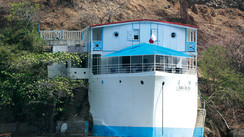
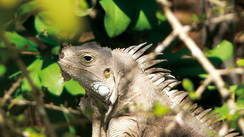
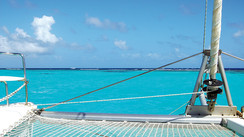
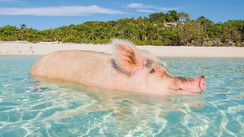
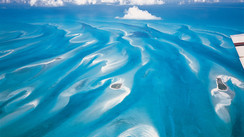
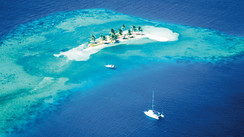







What readers think
Post a comment
No comments to show.